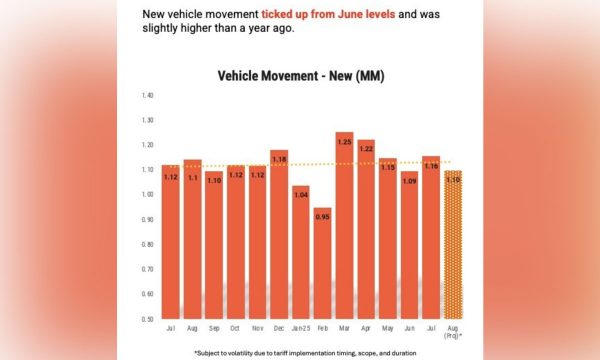A new analysis by market intelligence firm IDTechEx was released in the wake of the United States’ implementation of a broad range of tariffs. It found that, of the 1.3 million electric vehicles sold in 2024, 66% were assembled in the U.S., nearly 12% in Canada and Mexico (1.2% and 10.3%, respectively), and around 22% elsewhere in the world.
The firm noted that there are exceptions for CUSMA (Canada-United States-Mexico-Agreement) qualifying vehicles, and additional tariffs on component sourcing. IDTechEx said the tariffs extend to component sourcing, with powertrains, engines, transmissions, and electrical components subject to the 25% levy. “Even cars assembled in the U.S. (not imports) face tariffs,” they said.
A chart from the firm’s report showing the average percentage of manufacturers’ components that are sourced from the U.S./Canada indicates that Tesla sources almost 70% of its components in North America (and 31% elsewhere). “Even the manufacturer with the greatest production footprint in the U.S. — Tesla — is not immune to the tariffs,” said IDTechEx.
Honda sources nearly 60% of its components from the U.S./Canada (and 43% elsewhere), Ford a little more than 35% (and 65% elsewhere), and General Motors a little more than 20% (and 75% elsewhere). Volkswagen sources nearly 25% of its components from the U.S./Canada, more than GM. Most other brands source the majority, if not all of their components elsewhere.
IDTechEx’s research also highlights that 50% of all EV component value sold in the U.S. in 2024 came from abroad. They said “No EV in the U.S. currently has 100% component sourcing from the U.S./Canada. Another one of the firm’s charts, this one showing U.S. EV sales by percentage sourcing from the U.S./Canada in 2024, reveals the Mustang Mach E sources less than 15% (the rest elsewhere), the Chevrolet Bolt and Ford F-150 Lightning just under 30%, the Nissan Leaf 30%, the Chevrolet Silverado a little more than 35%, and the Tesla Model S and Tesla Cybertruck around 65%.
The final product crosses the U.S./Canada border many times, pointing to the possibility of cumulative cross-border tariffs. One example of a transmission for an ICE vehicle from Linamar showed the product crossing seven times, between Ontario, Pennsylvania, Midwest U.S., and Mexico.
IDTechEx said the final tariff (and eventual price increase) will depend on
- assembly location
- whether cross-border tariffs accumulate
- origin of non-U.S. components
- additional reciprocal rates on countries; and
- upstream raw material tariffs (e.g., steel, aluminum).
“Reshoring’” manufacturing capacity to the U.S. is not a quick process, and automakers may opt to take the flat rate 25% import tariff rather than risk potential tariff accumulation associated with the North American supply chain,” said IDTechEx.













